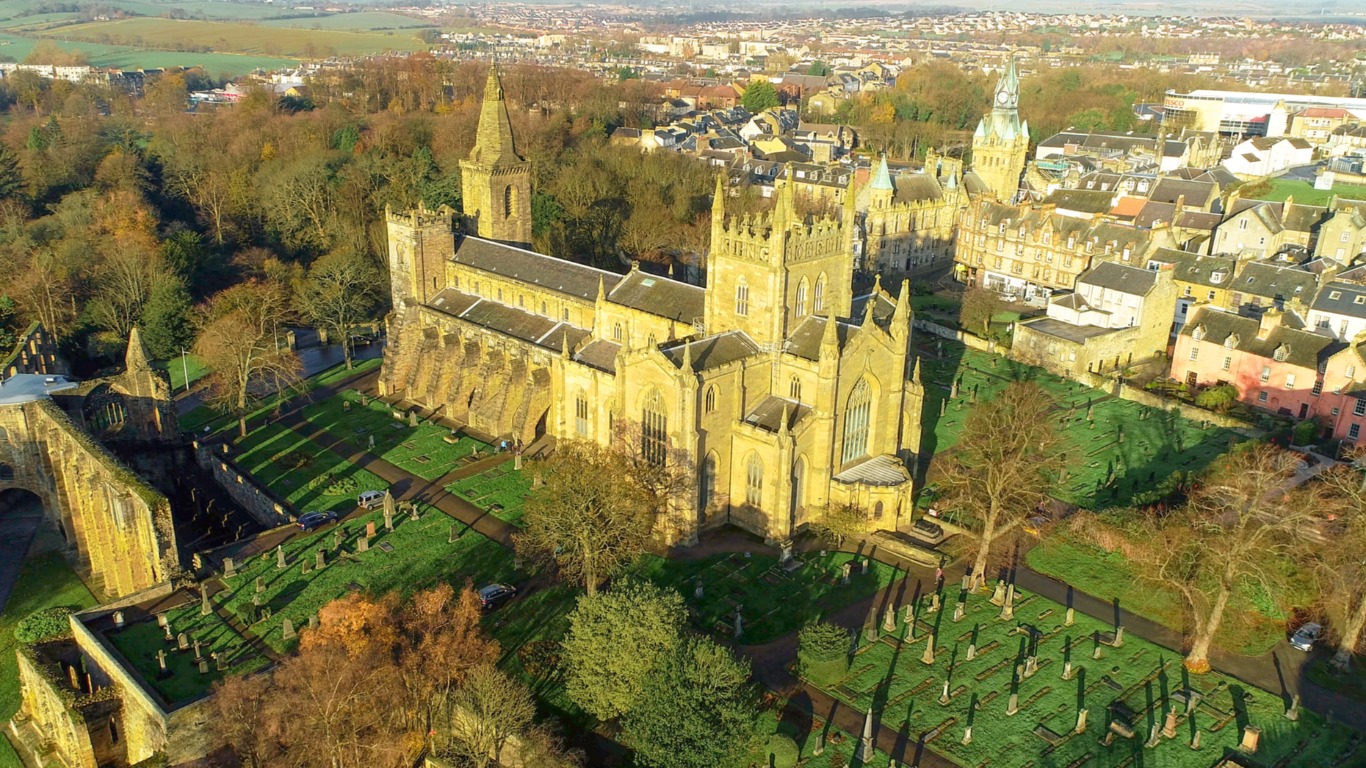Explore Dunfermline: top things to do, where to stay and what to eat
Scotland’s newest city – only recognised in 2022 – is a treasure unknown even to many Scots. Dunfermline, the Ancient Capital of Scotland, is woven around one of the UK’s most impressive historic cores; a dramatic setting for its vibrant cultural and music scenes.
Why go to Dunfermline?
Not for nothing is Dunfermline known as the ‘Ancient Capital of Scotland’. It was once the capital of the nation and is indeed one of the country’s oldest settlements. So, it’s no surprise that in 2022 Dunfermline was awarded city status. This is a hillside city built on the strongest of foundations, awash with royal heritage and some of the most remarkable historic buildings in Scotland. Dunfermline is the fulcrum that spawned many a Scottish king, gave the world Saint Margaret and is the last resting place of Robert the Bruce, the most celebrated of all the Scottish kings.
But it was not a royal who has made the most lasting impression on how Dunfermline looks today. That honour goes to a local boy made good Andrew Carnegie. When he was the world’s richest man and the first major global philanthropist, he ploughed a lot of his wealth and wielded his power to gift Dunfermline a striking library, swimming baths, stained glass windows for its abbey and even the city’s favourite park. Millions of people around the world have had their lives touched by Carnegie – it is to Dunfermline you must come to learn how he became a global icon.
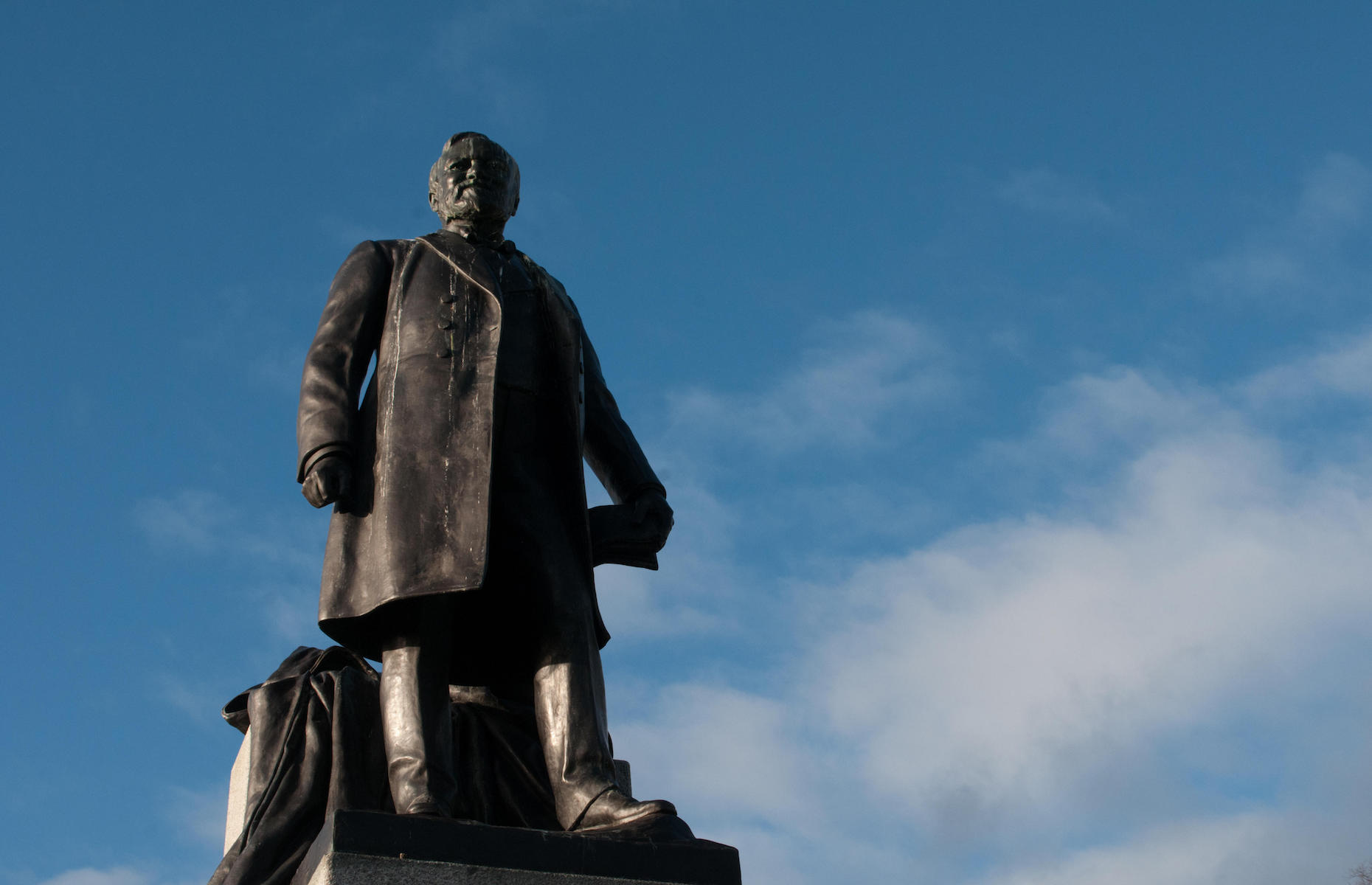 Pep Masip/Alamy Stock Photo
Pep Masip/Alamy Stock Photo
Man may have lived here – on the spectacular banks of the Firth of Forth across the water from Edinburgh – since at least Neolithic times, but the city is no mere museum piece, resting on its hard-won historic laurels. Oh no, Dunfermline is also the cradle of worldwide rock sensations Nazareth and Big Country, crooner Barbara Dickson and the new Doctor Who – the first Black doctor, Ncuti Gatwa, went to school here. Dunfermline was Scotland’s fastest growing town and now city status is heralding in a new golden age for this fascinating, still relatively unknown, slice of Scotland.
READ MORE: Take a look at our guide to Edinburgh
Top things to do in Dunfermline
Delve through the ages exploring Dunfermline Abbey, Monastery and Palace
Dunfermline’s 12th-century abbey is quite simply one of Scotland’s most spectacular and important ecclesiastical buildings. Step within its hallowed walls into its massive Norman nave and you are with the ghosts of Scottish royalty, who lie entombed here. Admire the striking stained-glass windows and peer through the grill to see remnants of the even earlier church founded by Queen Margaret. The newer section was added in the 19th century and is still in use. Look out for the tomb of Robert the Bruce, Scotland’s most famous king, who led its greatest victory over England in 1314.
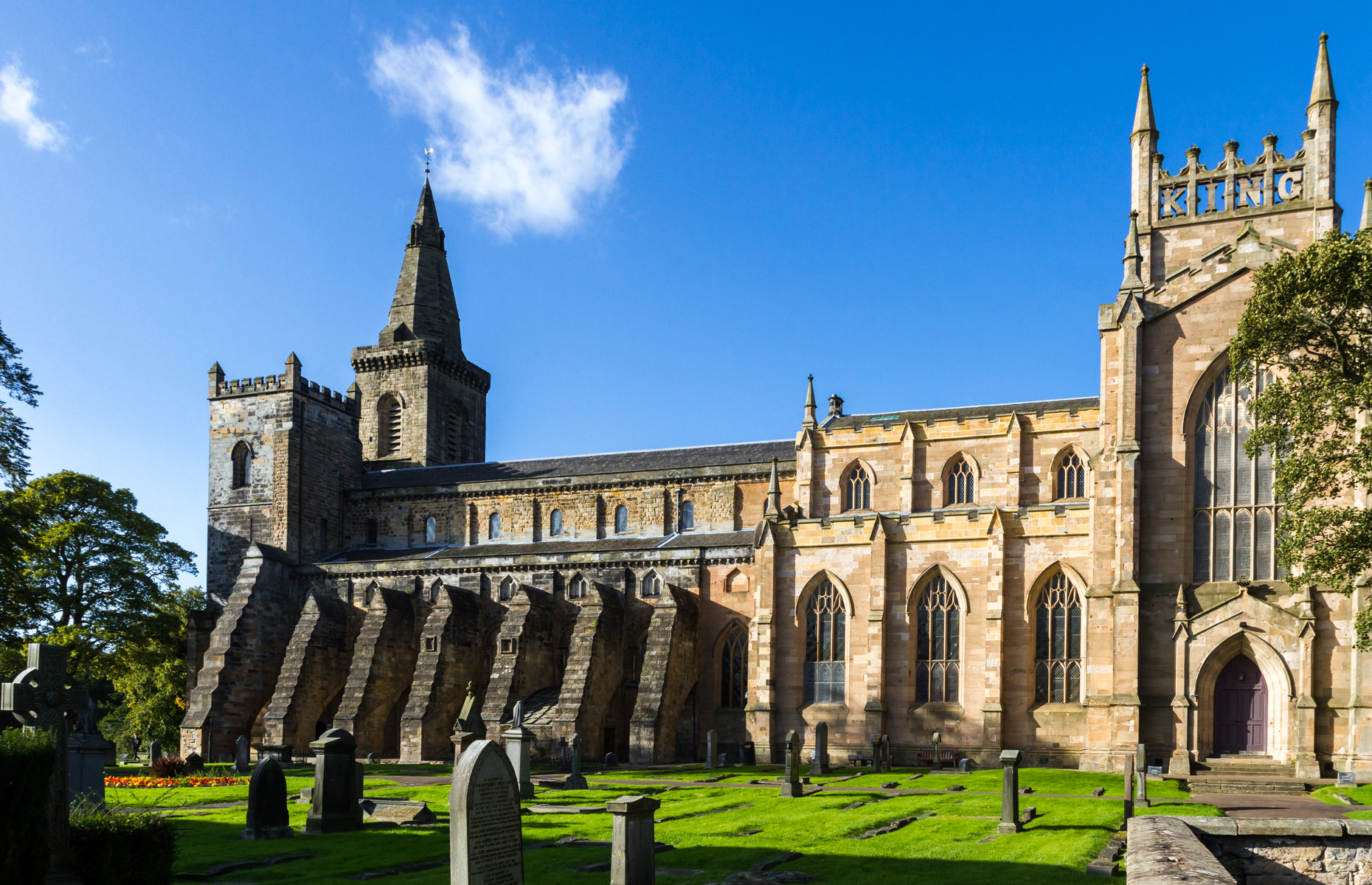 Nature's Charm/Shutterstock
Nature's Charm/Shutterstock
Resting in Dunfermline Abbey’s shadow are the ruins of Dunfermline Palace, where many Scottish – and indeed British – monarchs were born, including the famously beheaded king Charles I, who was born here in 1600. The palace was the epitome of royal pomp and grandeur until James VI moved the court to London in 1603. Strolling through and staring up at the sweeping façade takes you back to those days. Don’t miss the monastery ruins that spread around the grounds of a site you’ll spend far longer at than you planned.
Trace the legacy of Andrew Carnegie
It sounds like a fairy tale and in many ways Andrew Carnegie’s life was. You join his journey at his birthplace in 1835, a simple cottage that is now a museum. From these humble beginnings – his dad was a weaver and Carnegie’s first job was in a cotton mill – he amassed a huge fortune across the Atlantic, becoming the world’s richest man by 1901. He famously declared: “The man who dies thus rich, dies disgraced”. Carnegie lived out his words by giving away most of his money in a pioneering life of philanthropy, whose effects can still be seen around the world today.
Robin McKelvie
The Carnegie Library and Galleries is another essential stop, as is Pittencrieff Park. He was banned from playing here as a boy but returned in 1902 to buy the estate and gift it to Dunfermline so that all boys and girls could enjoy it. Within the park his hulking statue gazes back over the city. Look out too for the elegant stained-glass window he commissioned from Tiffany & Co. in New York to hang in Dunfermline Abbey. Further Carnegie traces linger in other gifts to the city – the public swimming pool and pipe organs in more than one church. In 1903 he created the Carnegie Dunfermline Trust to continue his work long after his death in 1919.
Relax like a local in 'The Glen'
Andrew Carnegie bought the Pittencrieff Estate back in 1902 to gift it to the city and today Pittencrieff Park is one of Scotland’s finest urban parks. Known simply as 'The Glen' to the locals, time stands still here when you ease through the gates and the modern world dissolves in this 76-acre oasis of flora and fauna. You’ll wander with the resident peacocks and other highlights include a trio of playparks, a hidden cave where William ‘Braveheart’ Wallace once evaded capture, a 200-foot high (61m) glasshouse alive with exotic plants and flowers, the soothing Japanese Garden and a formal garden that is a riot of colour in summer. The elegant Pittencrieff House, the old laird’s residence, is mooted to re-open as a museum. More historically significant are the ruins of Malcolm Canmore's Tower. It was from this redoubt that King Malcom III of Scotland ruled in the 11th century. His wife, Queen Margaret, was later canonised and is credited with first inviting monks to settle here, growing the monastery. The tower is behind Dunfermline's motto: Esto rupes inaccessa, or ‘Be an inaccessible rock’.
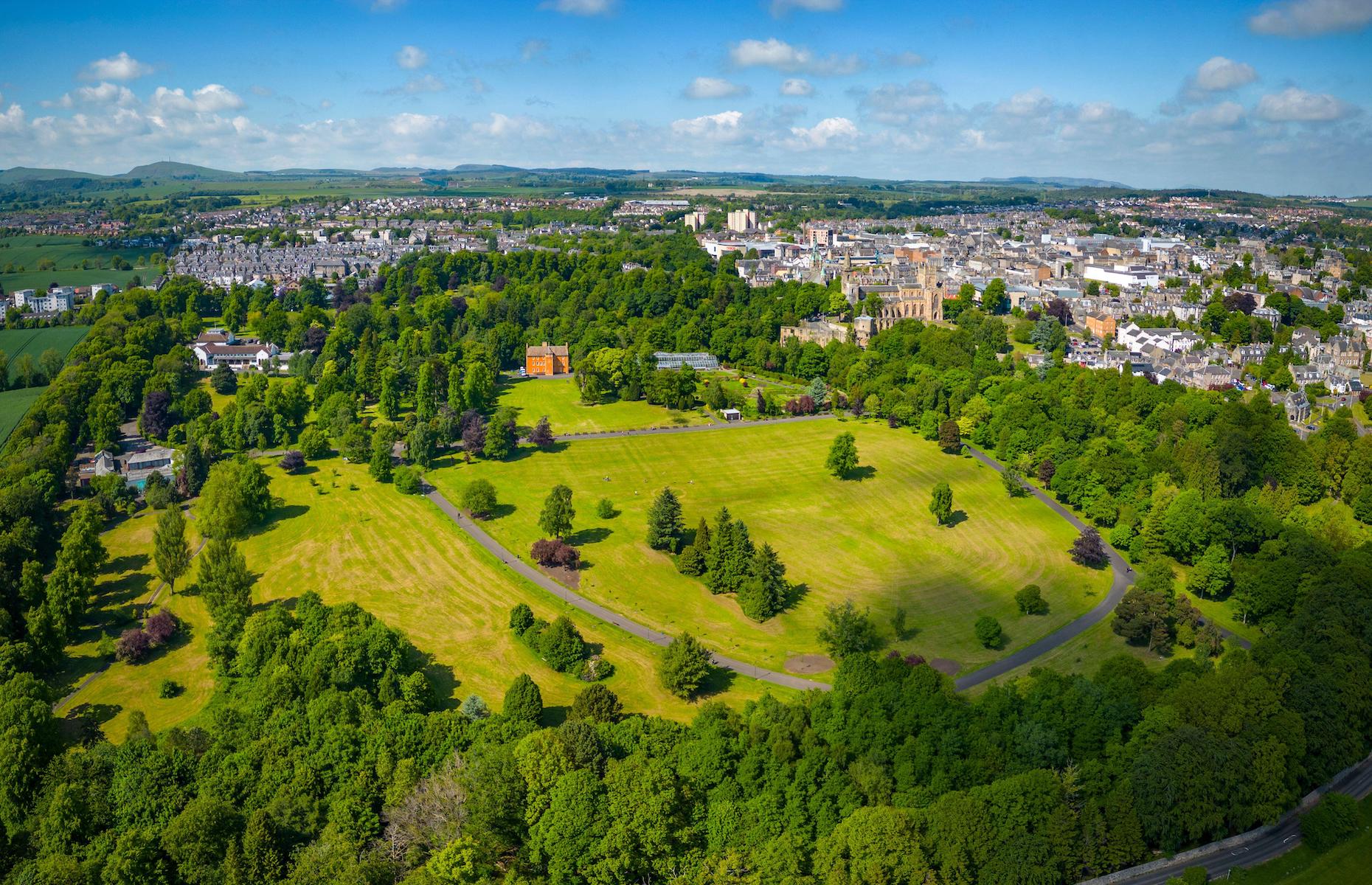 Iain Masterton/Alamy Stock Photo
Iain Masterton/Alamy Stock Photo
Walk the Fife Pilgrim Way
Scotland’s newest long-distance walk opened in 2019, tracing a route towards St Andrews, which for centuries was one of medieval Europe’s popular pilgrimage sites – up there with Rome and Santiago de Compostela – as people flocked to the bones of St Andrew, one of Jesus’ disciples. Dunfermline was a top draw too, with St Margaret’s shrine within the abbey said to boast miraculous powers. Numerous other churches, chapels and holy sites dotted the well-worn Fife pilgrimage routes in the days when Fife was known as the 'Pilgrim Kingdom'.
You can easily walk sections of the 65-mile (105km) Fife Pilgrim Way as it sweeps to the steps of Dunfermline Abbey, where an information board fills you in. Break west in search of the Way’s start at Culross with the Ochil Hills your companion to the north. Culross is one of Europe’s best preserved medieval villages and a key setting for the TV series Outlander. The views of the Firth of Forth are epic. Or head south towards the Forth via the historic towns of Inverkeithing and North Queensferry. The latter is named after the ferry commissioned by Queen Margaret to spirit pilgrims across the estuary. Little remains of the chapel she had built. There is no need for a ferry today with the striking trio of Forth Bridges, one of the most jaw-dropping sights in Scotland.
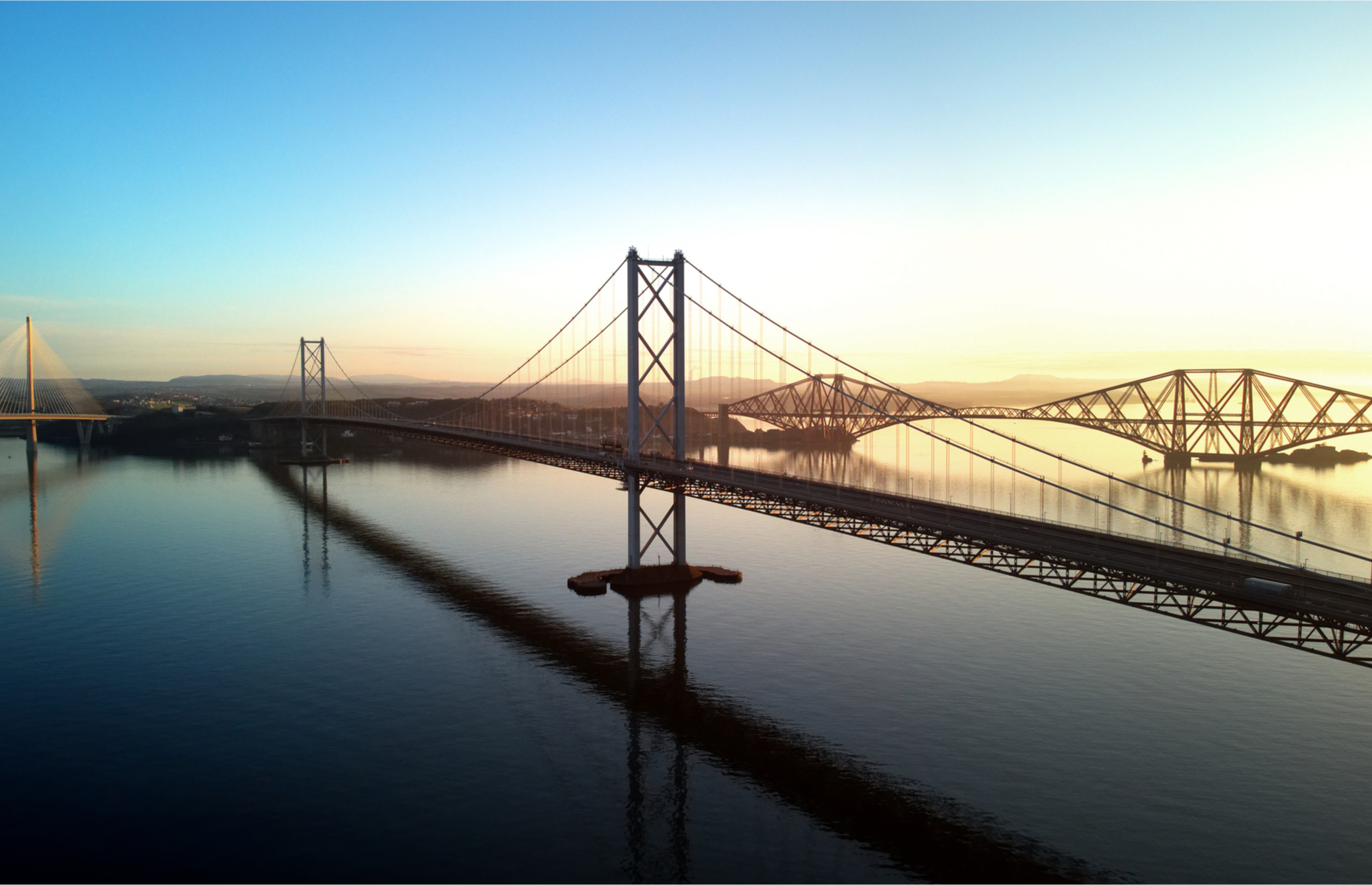 Tana888/Shutterstock
Tana888/Shutterstock
Best cultural attractions to visit
With so many centuries of history, it’s no surprise that the city’s culture is so richly woven. You can delve into its story, understand how it fits into Scotland and feel the new buzz that city status is bringing by checking out a flurry of cultural sites. This is no stuffy city that squirrels all its most beguiling bits behind Perspex: you can get up close and personal with the kings and queens who have shaped the city as you ease around its ancient streets. There is a real vibrancy to the music scene too, with two superb large venues with their own rich histories, along with live music in many of the local pubs.
Dunfermline Abbey: Savour the finest Romanesque architecture in Scotland at an abbey that is a dead ringer for Durham Cathedral – that is no surprise as stonemasons from Durham helped craft it. King David I – son of Malcolm III and Queen Margaret – commissioned it in part as a tribute to his mother. Mother and son both lie here. Following attacks from Edward I’s forces during the Wars of Independence, Robert the Bruce restored its glory, before he was later entombed here.
Dunfermline Palace: Until James VI and Queen Anna hefted the court off to London in 1603, Dunfermline Palace was their residence, the hub of Scottish and British power and the finest palace in Scotland. When the Royal Court left, it soon fell into disrepair, but tantalising teases of its grandeur linger today, a grandeur that had grown since King Malcom III made Dunfermline his capital in the 11th century.
Robin McKelvie
Carnegie Birthplace Museum: The modest cottage where Andrew Carnegie was born has been augmented by an Art Deco museum hall, constructed by his widow in 1928. The eclectic collection opens a window into 19th-century Dunfermline and the emigration experience. You follow how Carnegie grew his business interests in Pittsburgh and amassed a staggering fortune as the world’s richest man. The most fascinating story, of course, is how and indeed why he decided to give away 90% of his wealth, founding New York City’s Carnegie Hall, Peace Palace in The Hague and California’s Mount Wilson Observatory. His links to Marie Curie, Theodore Roosevelt and King Edward VII are fascinating too.
Carnegie Library and Galleries: The grand library that Carnegie founded here in 1883, the first of almost 3,000 Carnegie libraries around the world, still functions for all ages, but a brilliant modern extension has created gallery space and a permanent exhibition telling Dunfermline’s story. The museum is spread across six themes: industry, leisure and recreation, transport, conflict, homes and royal Dunfermline. You learn how famous rock band Big Country hailed from here and how local damask was used aboard the Titanic. There are great views through the floor-to-ceiling windows out to Abbot House (the city’s oldest building; slated to re-open as a museum) and the Abbey.
Robin McKelvie
City Chambers: Dunfermline already has the City Chambers it needs to reflect its newfound status. And what a building it is – in a city of dramatic architecture this dreamy creation stands out. Conjured up by James C Walker, who fashioned the first Carnegie Library, it is far more playful, merging French, Gothic and Scots baronial architectural styles. The heraldic stones incorporated in it were recovered from the demolished 1771 Town House on the site, possibly even from Dunfermline Palace. It’s still very much in use with the Council Chambers and the Burgh Court, and locals still register births and deaths here. Look out for a symbol of the city – the four-faced clocktower – and the gargoyles, alongside busts of King Malcolm III, Queen Margaret, and Robert the Bruce.
Carnegie Hall: Named, of course, after Dunfermline’s most famous son and indeed funded by his trust, this majestic venue opened in 1937. It was the second Carnegie Hall after New York and designed by local architects Muirhead and Rutherford. It has played host to everything from plays and kids’ shows, through to rock concerts and the recording in 1976 of Scottish comedian Billy Connolly’s Atlantic Bridge album. The other half of the album was recorded in New York’s Carnegie Hall. In 2000 the complex was expanded to incorporate the adjoining Music Institute as a studio performance space and to make the Carnegie Hall an arts centre for Dunfermline. Catch a show here, if you can.
Robin McKelvie
Fire Station Creative: This quite brilliant social enterprise, arts space and café is a must, housed in a striking former Art Deco fire station that dates to 1934. There are studios, a classroom and gallery space. Remarkably it’s home to over 30 artists, working across 20 studios. Plus, a welcoming hipster café serving great coffee and cakes. It’s a great place to take the pulse of the local culture scene. Go!
Alhambra Theatre: This Dunfermline icon celebrated its 100th year in 2022. Over the years it has constantly adapted and moved with the times to somehow survive – it’s been a bingo hall and today hosts such eclectic acts as the Happy Mondays and Scottish comedian Kevin Bridges. And, of course, it’s much-loved locally Christmas pantomimes.
READ MORE: 10 life-affirming experiences you can only enjoy in Scotland
Where to stay in and around Dunfermline
By the High Street and next to Pittencrieff Park, The City Hotel could scarcely be better located. Comfortable rather than luxurious, the welcome is a friendly one and the rooms a decent size, especially if you plump for a business or an executive room. Handily, it also has a range of family rooms. Tuck into a hearty traditional Scottish breakfast at its Weavers Restaurant.
It’s all going on at 1703 Dunfermline, with this sturdy historic stone building in the city centre alive with a brace of restaurants, a trio of popular bars and a live music venue on site. Yes it can be a bit noisy, but if you want to be in the heart of the Dunfermline action, this is the place. As well as doubles it has handy triples, and larger King rooms if you want to stick with Dunfermline’s royal heritage. Huge Scottish breakfasts set you up for a day’s sightseeing. Book direct and the team will throw in a bottle of wine.
For one of the best views in urban Scotland book into the Doubletree by Hilton Edinburgh – Queensferry Crossing. Make sure to snare a River View room (or a suite with a view) and enjoy gazing at the trio of remarkable Forth Bridges as they straddle the Firth of Forth in search of Edinburgh. Its decent restaurant and bar has more views. Ten minutes by taxi to Dunfermline city centre.
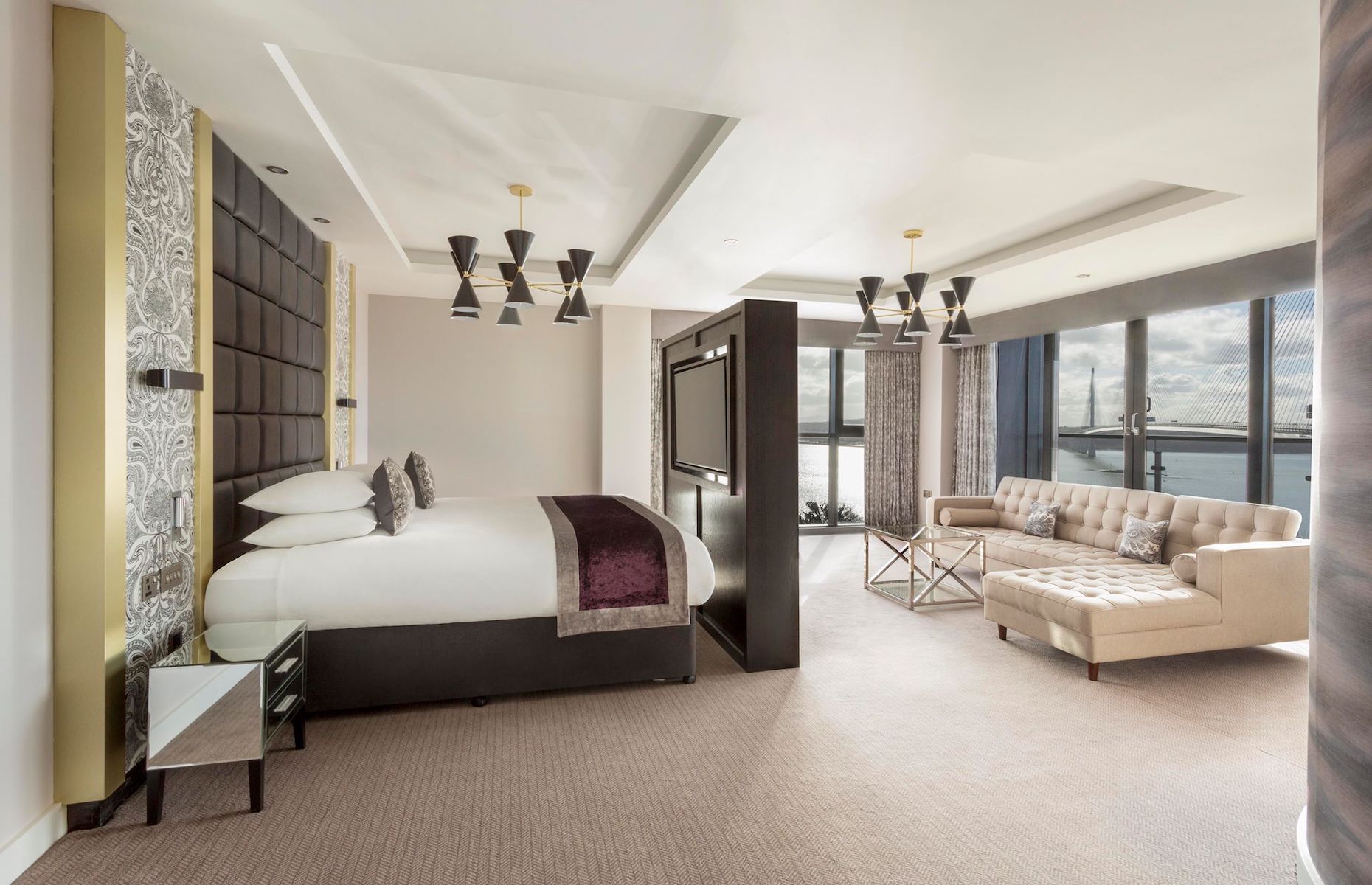 DoubleTree by Hilton Edinburgh Queensferry Crossing/Facebook
DoubleTree by Hilton Edinburgh Queensferry Crossing/Facebook
Where to eat in and around Dunfermline
If your image of Scotland is stuck in anachronisms about deep-fried Mars Bars and sickly-sweet shortbread, then you might want to consider that the country offers some of the finest seafood anywhere, world-renowned beef and lamb, and first-class soft fruits. There is nothing yet to trouble the Michelin star inspectors, but you can eat well in Dunfermline. The surrounding Fife region dishes up a rich bounty of shellfish landed in the East Neuk, beef and lamb from its hinterland and flavoursome raspberries and strawberries. The cheddar-style products of the local St Andrews Farmhouse Cheese Company are a delight too.
When it comes to ‘modern Scottish’ cooking, the stylish duo of Jack ‘O’ Bryan’s and 1703 Restaurant stand out. They were joined in 2022 by Christie’s, a Scottish tapas restaurant with a menu that delves into that rich regional larder. How about haggis bon bons in a whisky cream, mac ‘n’ cheese made with creamy Orkney cheddar, or west coast scallops pan-seared and spiced with a chilli jam, smoked bacon crumb and a potato rosti? The Wee Restaurant in North Queensferry is well worth a trip out of the city. Sitting in the shadow of the Forth Bridge this is grown-up cooking and great value too – think Fife-landed langoustines and lamb from the region’s bountiful farms.
A welcome influx of restaurants bringing flavours from all over the world has spiced up the Dunfermline restaurant scene. Most notable are Dhoom and Khushi’s, which have brought creativity, smooth service and a splash of design in their décor.
Dunfermline – like all of Scotland’s cities – has a strong pub culture, with many pubs serving rib-lining hearty treats. The usual suspects (burgers and fish and chips) sit alongside Scotland’s national dish of haggis, neeps (swedes) and tatties (potatoes). The best plan for pub dining is to ease along the High Street, keeping a keen eye on the side streets, and pick somewhere you like the look of that isn’t too raucous. The Glen and the Seven Kings are usually good. The latter now offering more esoteric offerings, like Italian sausages and bao buns, alongside the old favourites.
How to spend a weekend in Dunfermline
Day 1
Check-in to: 1703 Dunfermline. With a trio of bars on site and a restaurant, you can really hit the ground running and stay in as much as you like. The location is spot on, right at the heart of the action, making sightseeing a breeze.
Get to know the city with: Dunfermline Tours. This web-only guide has been set up by a local cultural trust. There are half a dozen well thought out options from the obvious ‘St Margaret’s Journey’ and the ‘Right Royal Toun’, through to the different ‘Dunfermline’s Soundtrack’, which delves into the lesser-known musical heritage, from the epic opera house that never was to PJ Molloy, an alternative music venue still thriving today. A Spotify playlist accompanies the musical tour.
Have a coffee break at: Dunfermline Carnegie Library and Galleries. The friendly café here does proper brews and has great home bakes too. On a sunny day sit outside and breathe in the history all around. Then learn the story of Scotland’s newest city, which comes alive at this brilliant museum that architecturally marries the modern with the historic – it does the same with Dunfermline’s timeline. There is plenty for wee ones to touch and for adults to ponder.
Savour modern Scottish cooking: Jack ‘O’Bryan's. Kick off with a Bramble cocktail with the local fruit flavoured gin balanced with lime juice and sugar syrup. Then it’s on to miniature local lobster and macaroni pie, before a Scotch beef steak with chimichurri and a garlic aioli.
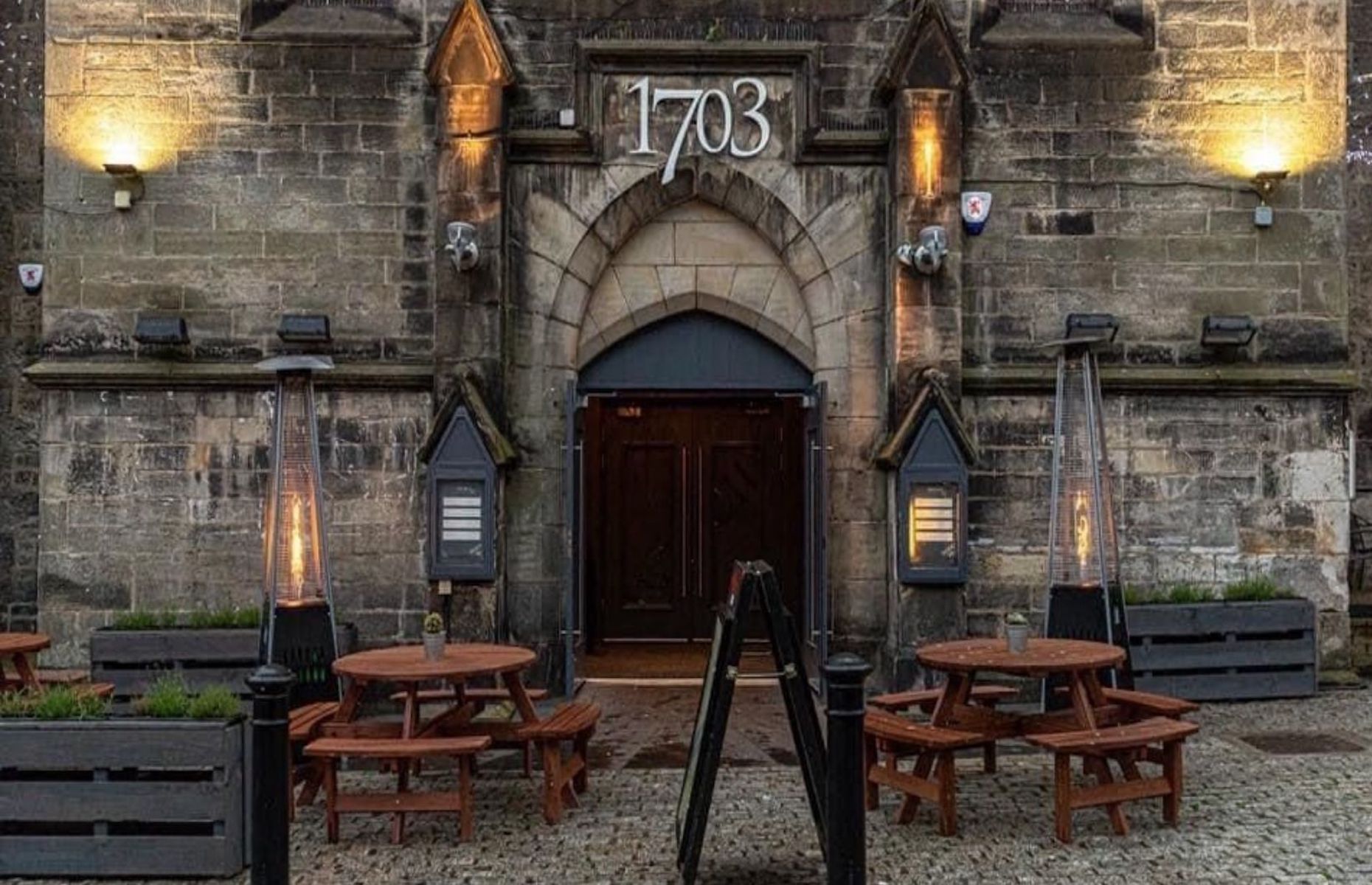 1703 Dunfermline/Facebook
1703 Dunfermline/Facebook
Day 2
Start the day at: Pittencrieff Park. Join the locals wandering around their favourite green lung. Doff your metaphorical hat at the statue of Andrew Carnegie and appreciate his tremendous view of the city before losing track of time on the walking trails.
Lunch on another continent at: Kushi’s. Its sound provenance, with local produce starring, and excellent spicing are a winning combination. The brightly coloured talking tuk-tuk welcomes you inside and sets the tone for a relaxed, fun treat. There’s a lunchtime tapas-style menu.
Bask in the history at: Dunfermline Abbey, Monastery and Palace. You have to spend a half day here at least, being awestruck in the soul-stirring nave of the abbey. The more modern church is still in use and is dramatic in a different way, but impressive too and essential to visit for Robert the Bruce’s tomb.
Have a night out at: 1703 Restaurant. With a cocktail bar, beer cellar and restaurant, you cannot go wrong here. If there is no live music on afterwards there is bound to be something on at PJ Molly, the Alhambra or the Carnegie Hall instead.
 Kushis/Facebook
Kushis/Facebook
Day 3
Go Forth on the: Fife Pilgrim Way. Step through the centuries as you hike south, bound for the Firth of Forth. Your efforts are rewarded at North Queensferry, where the Forth Bridges, three architecturally significant bridges from three successive centuries, span the waters.
Enjoy a lazy lunch at: Wee Restaurant. Reward yourself further toasting the Forth Bridges and Saint Margaret with Craig Wood’s perfectly cooked hand-dived Orkney scallops, followed by roast rump of local lamb.
For more information about Dunfermline please visit the official tourist website.
READ MORE: 9 great ways to experience Scotland's first national park
Main image: TreasureGalore/Shutterstock
Comments
Be the first to comment
Do you want to comment on this article? You need to be signed in for this feature
